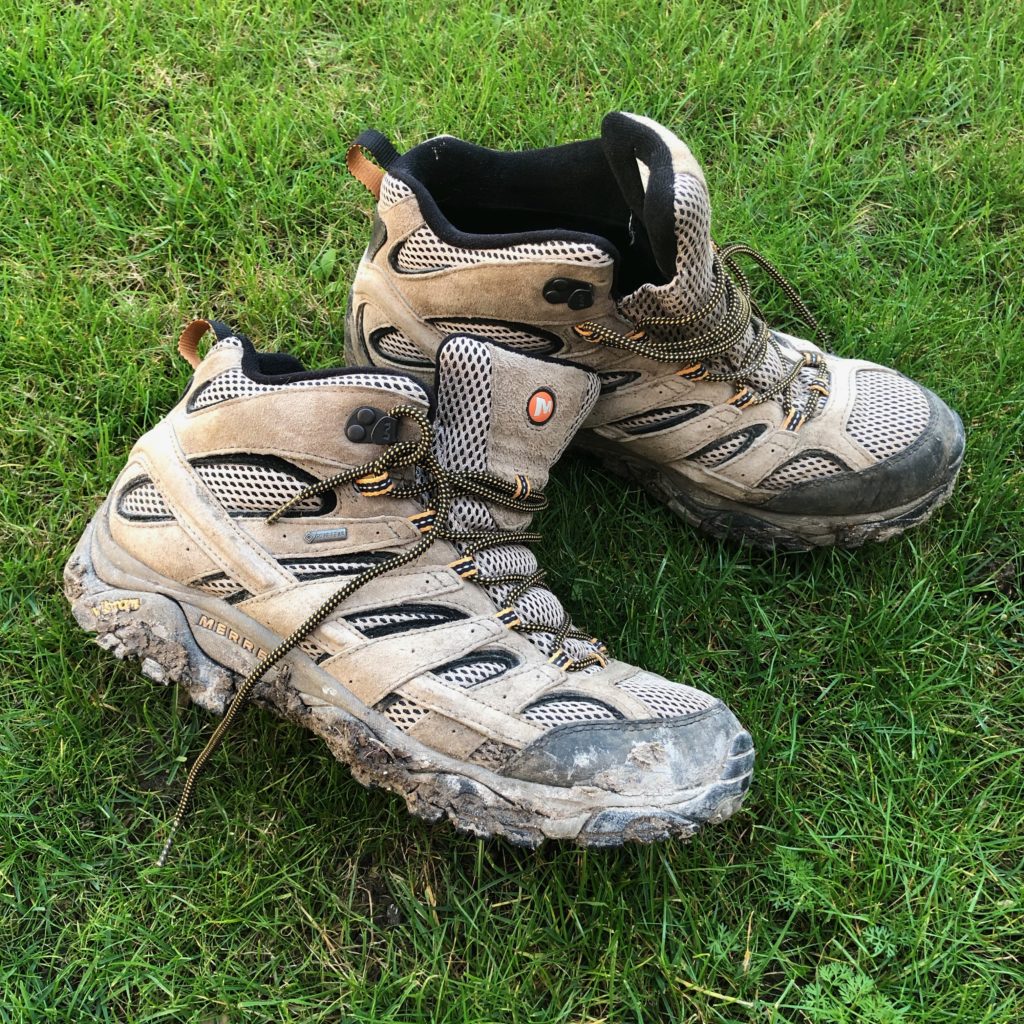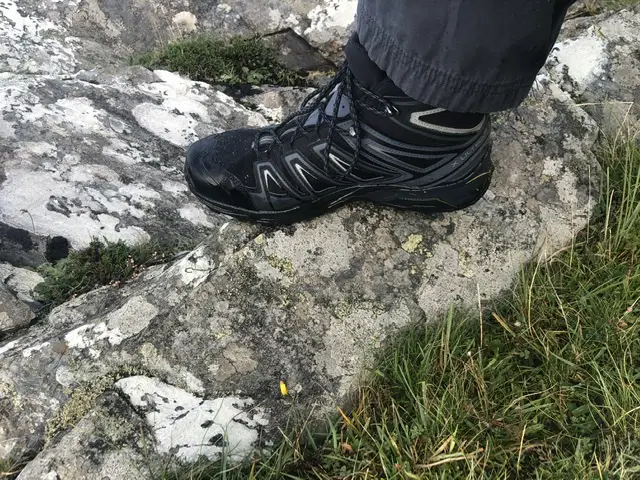Q&A: Should you wear GORE-TEX boots for hiking?
Between us, James and I have owned and worn a lot of different hiking footwear over the years. Classic leather boots. Chunky, rigid, water-proof boots issued by the army. Light-weight trail shoes. And of course modern, high-tech, waterproof boots like the Moab 2. I recently bought a new pair for some winter hiking in the UK, and ended up pondering a question that I can see has occupied a lot of people online; are GORE-TEX boots a good choice for hiking?
What are GORE-TEX boots?
The first thing to understand is what that GORE-TEX label on the outside of the boot actually mean. GORE-TEX is a brand of waterproof fabric that is probably best known for making raincoats. Like all waterproof fabric companies, they will insist on being both ‘waterproof and breathable’ but whenever you are dealing with waterproof fabric, it’s important to replace the word ‘breathable’ with “as breathable as we can manage given the inherent contradiction between breathability and waterproofness”. That’s not a criticism, but it is important to be aware of when you are considering whether you want GORE-TEX boots for hiking.

If you buy GORE-TEX or other waterproof boots, it’s not that the outer fabric will generally be any more or less waterproof than other boots. Rather, there will be an inner layer of waterproof fabric within the construction of the boot; think of it like a sock, but built into the boot so you don’t notice it’s there. This prevents water from penetrating inside the boot and so, in theory, keeps your feet dry. However, it also prevents moisture from getting out, meaning that perspiration can build up inside the boot, and if your boots do fill with water (for example from wading in a stream, or standing in boggy ground that goes over the top of the boot) they will not drain and will take a long time to dry.
What are the benefits?
The advantages of wearing waterproof boots on a hike should be obvious – they’ll stop your feet from getting wet, or at least prevent outside water from making your feet wet. This makes for a more comfortable hike, is likely to keep your feet warmer in cold conditions, and can prevent blisters, chafing and potentially even trench foot. On multi-day hikes, being able to put dry boots on each morning is great for both your morale and your health, and I’m a big believer in the principle that it’s a lot easier to stop something getting wet in the first place (i.e. your socks, or your feet) than it is to try and dry them once wet.

What are the disadvantages of GORE-TEX boots?
Opponents of GORE-TEX boots for hiking, and there are many, point out that if moisture also can’t get out of the boots, you are just as likely to end up with wet feet through perspiration, or water getting over the top of the boots. And, unlike with water-permeable boots which will often simply dry as you walk (especially in reasonably warm weather), there’s simply no way for the water to get out of GORE-TEX boots so it will just sit there, keeping your feet wet, until you stop and get the boots properly dry. Even that can take substantially longer because moisture can’t easily get out of the boot.
It’s also worth bearing in mind that GORE-TEX doesn’t last forever and, if that waterproof ‘sock’ is punctured, cracks, or simply wears out through use, water can leak in and you’ll start to get all of the disadvantages with few of the advantages.
Will GORE-TEX shoes keep your feet dry?
Up to point, GORE-TEX shoes and boots are what you could consider ‘waterproof’, but there will always be a point at which water ingresses the interior. GORE-TEX boots have the advantage of a high cuff which provides an extra layer of protection for those moments when you’re skipping through puddles. Add a pair of gaiters to your ensemble and you have a highly effective water barrier.
GORE-TEX shoes have a low cuff which makes them less suitable for hiking and walking through long, wet grass. As with boots, you can beef up the water resistance by wearing gaiters although you still have the issue of water lapping over the cuff if you step into a deep puddle.
So, should you buy?
It might seem as if this article isn’t really helping much with deciding whether waterproof boots are for you; I’m simply giving you the pros and cons. Well, that’s probably not surprising because the answer to this question is really “it depends”. GORE-TEX boots aren’t right for all circumstances, but I would also completely disagree with those who argue that they are never a good buy.
When is waterproof footwear a good idea?
- If you’re hiking in very cold, rainy conditions then waterproof boots really will help to keep your feet and socks warm and dry. In addition, perspiring feet will be much less of an issue, and the breathability of the GORE-TEX is enhanced when the outside of the boot is colder than the inside.
- The same goes even more so if you expect to be hiking in snow, which can cause your boots to quickly become saturated in ice-cold melting snow, and offers few opportunities for them to naturally dry out.
- A lot of the terrain you get in the UK in winter, especially in Wales and Scotland, really suits waterproof boots: lots of bog, mud, standing water a few inches deep, and wet grass than can quickly soak your footwear but is unlikely to get over the top of boots. In these conditions, water-permeable boots would tend not to dry anyway so it’s beneficial to keep your feet dry to begin with.
When is waterproof footwear not a good idea?
- Warm conditions, even if your feet are likely to get wet. The boots will be less breathable when it’s warm, plus you’re likely to perspire more, and if you do get wet, water-permeable boots will tend to dry quickly in warmer temperatures anyway.
- Dry conditions, even if cold. GORE-TEX boots simply aren’t the most efficient way to keep your feet warm in cold, dry conditions
- Hikes where you expect to be doing river crossings or wading through water deeper than your boots. GORE-TEX boots won’t keep out water that is over the top of the boot, and once that water gets in it will not drain or dry out easily. Even if you remove your boots for river crossings unless both your socks and feet are perfectly dry before you put your boots back on, you risk ending up putting wet feet into waterproof boots.
Buy one of our favourite pairs of GORE-TEX hiking boots below:




